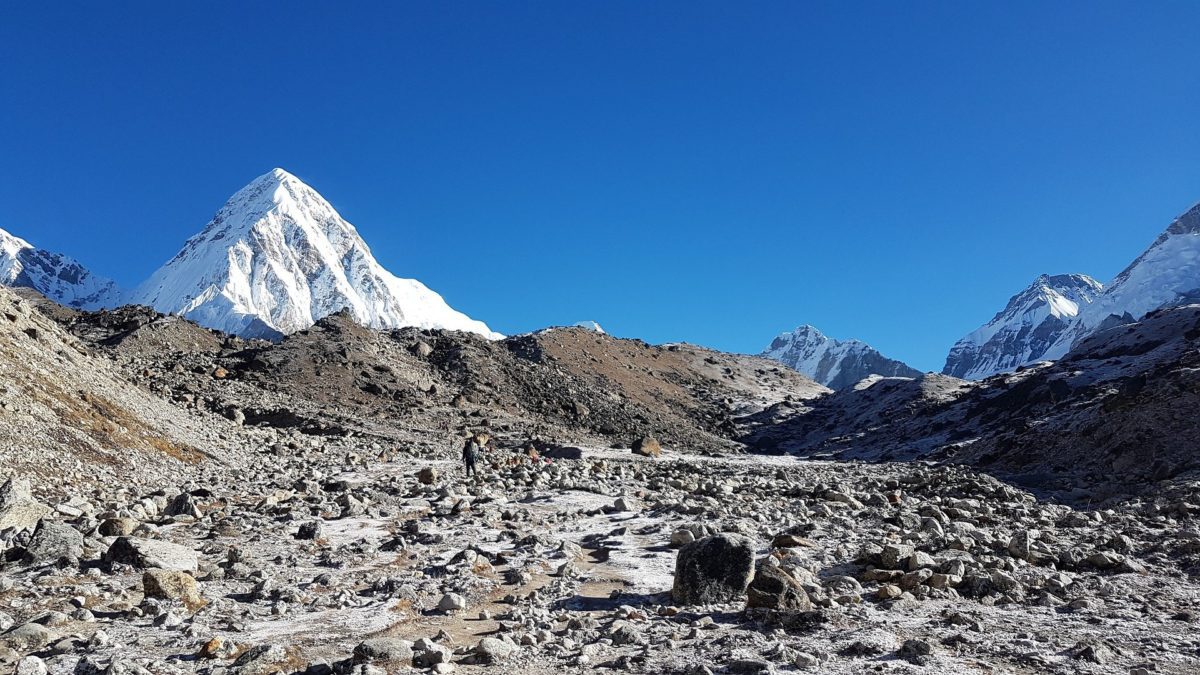Trek in Nepal or Trekking in Nepal is simply described as trekking through the earth’s wonderland. Nepal is recognized for being a nation of diverse landscapes as well as a historic adventurer. As a result, whether you’re a first-timer or an adventure seeker, you can get what you desire.
You are most welcome to realize your dream in Nepal’s wonderful Himalayas, and we will provide you with comprehensive trekking in Nepal experience to match your needs. A huge variety of wildlife, endogenous life in National Parks; Living Heritage with rich art and culture; attractive hamlets conserving old customs, and welcoming locals are sources of inspiration for inquiring travelers looking for illuminating experiences.
We provide a variety of adventure trekking in Nepal, including Everest Trekking, Annapurna Trekking, Langtang Trekking, off-the-beaten-path Trekking, and Peak Climbing. Trek in Nepal is the greatest way to see Nepal, where you can see everything from Himalayan views to highly spiritual ethenic — a culture that must be experienced to be believed. Let’s organize a holiday trek in Nepal together. We make every effort to make your trip one to remember.
The list of the six best regions to trek in Nepal are:
Everest Region Trek
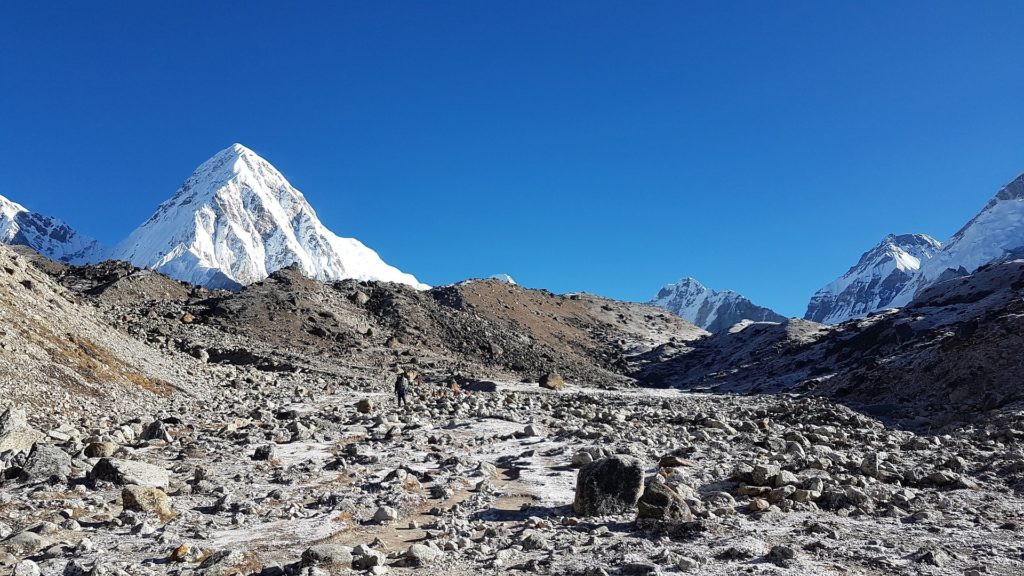
The Everest region trek’s most spectacular and gorgeous terrain has awed the globe, making it Nepal’s most visited place. The area is protected by the Sagarmatha National Park and is home to the world’s highest peak, Mt. Everest (8848m), as well as highland Sherpas and Yetis. Red Pandas, snow leopards, musk deer, Himalayan Tahr, Marten, Pika (Himalayan mouse); more than 115 species of birds; high land vegetation including Juniper, silver fir, hemlock, pine, rhododendron, and alpine plants call the national park home.
In 1979 A.D., UNESCO designated this area as a World Natural Heritage Site due to its outstanding natural beauty. Meanwhile, the Sherpa culture and tradition have made this a once-in-a-lifetime destination.
Kongde, Kusum Kanguru, Thamserku, Amadablam, Baruntse, Makalu, Everest, Lhotse, Choletse, Lhotsesar, Nuptse, Cho Oyu, and Pumori are among the snowcapped mountains over 6000 meters that make the landscape spectacular, and the passes over 5000 meters: Kongma-la, Cho-la, Renjo-la, Tashi Lepcha, Amphu Lepcha, The breathtaking views from the Gokyo Ri, hiking to the Fifth Lake, the Khumbu Glacier to the foot of Mt. Everest at Base Camp, and the Kalapatthar Hike to view Everest are all incredible adventures in the Himalayas.
Annapurna Region Trek
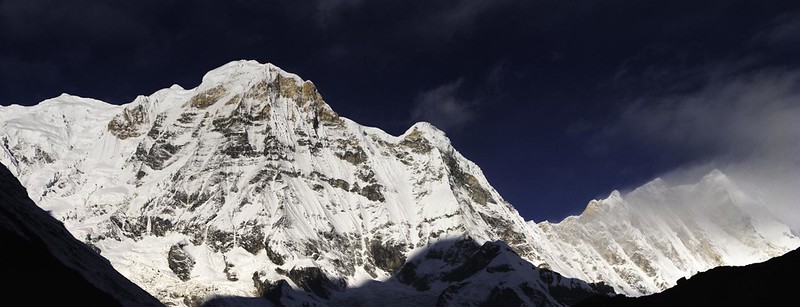
Western Nepal is known for the Annapurna region, which is a highly famous and best location with a variety of trekking options ranging from the most popular to off-the-beaten-path secluded treks, as well as short and easy to difficult climbs. Beautiful Annapurna (I, II, III, and IV), Dhaulagiri, Macchapuchre, Lamjung, and many more snowline peaks overshadow the area. The major highlights are the ancient salt trade route of Manang, the Thorang-la Pass, the sacred site Muktinath, and the deepest gorge in the world- the Kali Gandaki River gorge.
The welcoming Gurung, Magars, and Manangis are significant residents who practice Himalayan Buddhism and Hinduism and contribute to the region’s rich cultural legacy. The Braga Gompa, a monastery in the old Manang valley, represents more than 400 years of history. Similarly, the inhabitants of Upper and Lower Manang celebrate Yartung and Nungne festivals, which commemorate historical wars and a series of meditations aimed at cleansing one’s spirit.
This region has an exceptional range of vegetation, ranging from sub-tropical lowland forests of oak, bamboo, and rhododendron in the south to high alpine meadows and windswept desert plateaus in the north, bordering Tibet. Pika, blue sheep, and Himalayan Tahr are among the fauna found here. The peak and nearby hill areas are protected inside the Annapurna Conservation Area Project (ACAP), which was formally inaugurated in 1986 A.D. to safeguard the area’s natural and cultural legacy for the long-term benefit of locals.
Pokhara, the gateway to Annapurna, is a lovely city that fascinates with its abundance of natural beauty and a vast range of accommodations and services. Annapurna Base Camp, Annapurna Circuit, Jomsom Valley, Sikles, Ghorepani-Poon Hill, Lamjung, Manang Valley, Dhaulagiri, and the villages around Pokhara are among the most popular treks in Nepal.
Mardi Himal (5587m), Chulu East (6584m), Chulu West (6419m), Pisang (6091m), Singu Chuli (6501m), and many others are among the top climbing peaks in the vicinity. For a good perspective of the spectacular mountains and surroundings, the ideal seasons to trek in Nepal are spring (March, April, and May) and autumn (September, October, and November). Mountain lodges are available on every route, from the most basic to the most luxurious.
Langtang Region Trek
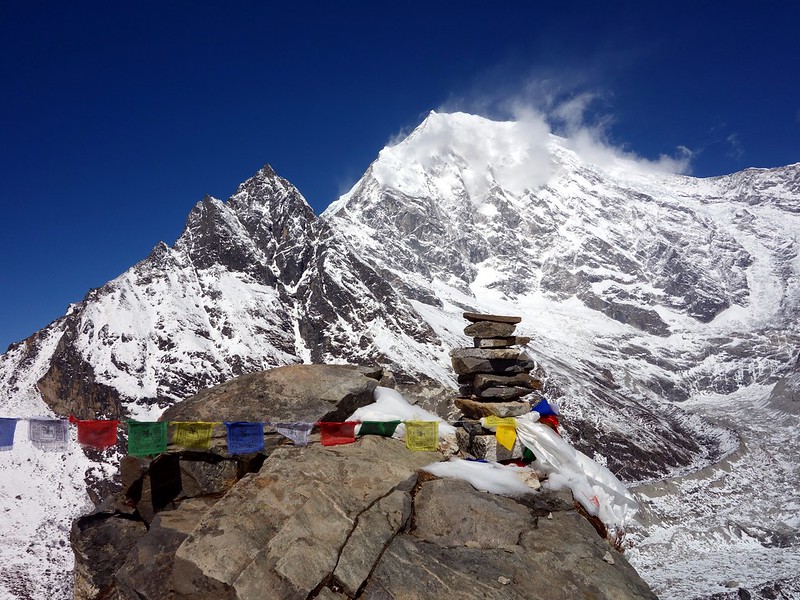
The Langtang region, which borders Tibet and is the closest Himalayan region to Kathmandu, is also a remote land with few tourists. With no airplane choices, a few hours’ drive to the valley reveals the colorful culture, religion, and customs of Tibetan-origin ethnic groups against a backdrop of breathtaking mountain scenery with minimal exertion when trekking in Nepal’s Himalayas.
The region is protected by Langtang National Park, which was also established as Nepal’s first protected Himalayan National Park in 1971 A.D., and is home to a diverse range of flora and animals, including migratory birds, Tahr, Panda, monkeys, and Pika. ChanElevation changes with the region’s diverse geography and geology have resulted in a one-of-a-kind patchwork of plants.
This trip takes you through diverse scenery, including evergreen woods, flowing waterfalls, and raging streams, as well as sub-alpine meadows and closer to the peaks of Langtang Lirung (7246m), Gang Chhenpo (6388m), Lenpo Gang (7083m), and Dorje Lakpa (6990m). Trekking in Nepal through the Langtang region can be paired with Gosaikunda and Helambu in the south and Ganesh Himal in the south for added flavor.
Trekking in Nepal through these paths is an opportunity to discover a secret region that reveals Tibetan Buddhism while preserving a rich cultural legacy that can be seen in ornately carved wooden windows, vibrant dance festivals, and expert weaving practices. While trekking from Sundarijal, the closest trekking halt, access to Gosaikunda and Helambu is quick and straightforward.
The Ganesh and Langtang, on the other hand, begin and conclude their stops at Dhunche and Syabrubesi. The Kyanjin Gompa, Shin Gompa, and holy Gosaikunda with more than 108 lakes, Briddim ethnic dance, and the ancient fort- Rasuwagadi are the highlights of this region. The Shaman worship on the Janaipurnima (Full moon day in August/September), Lhosar, and Sakadhowa festivals are all held here.
Trekking in Nepal in the Langtang region is easy, with decent transportation and plenty of lodges along the way (save in the Ganesh Himal area), allowing you to visit Tamang villages, climb lesser peaks, and view glaciers at a more pleasant height.
Remote Region Trek
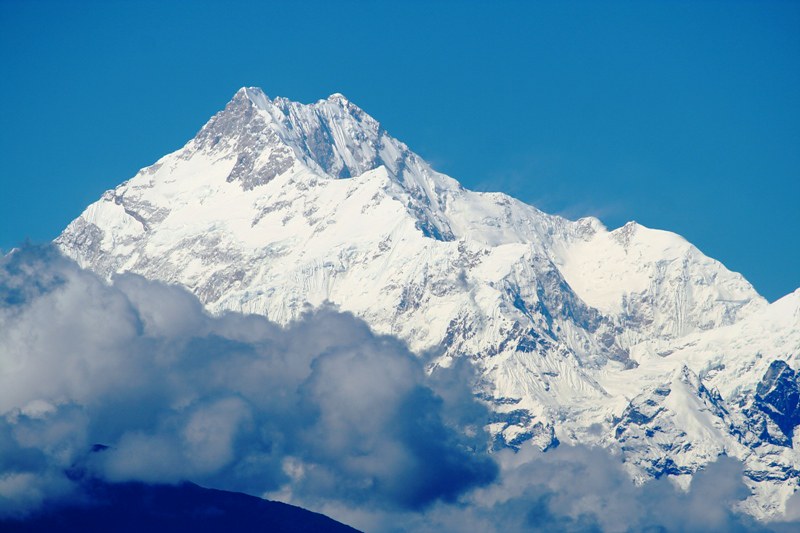
In a remote area trek in Nepal, you’ll find all the off-the-beaten-path treks in Nepal’s isolated parts. Because these areas are ecologically, culturally, and politically important, they are mostly categorized as Restricted Areas, with entry severely prohibited by the Nepalese government. Nepal’s prohibited remote regions were eventually opened in October 1991, according to the Home Ministry. Only group visits were available, and permission prices ranged from US$90 to US$500 per week.
Obtaining special authorization from the government permits you to enter such locations, and the government will send a “Liaison Officer” to ensure that everything is running well. The main goal of declaring these areas “restricted” is to protect the fragile environment and cultural integrity of these regions, as well as to provide security for trekkers’ safety and Nepal’s northern border with Tibet.
Officially, Nepal’s destinations are no longer prohibited; yet, entering those regions that were previously forbidden to foreigners requires special authorization. The entrance of international tourists into these places is strictly controlled, although a trekking permit is only issued a restricted number of times per year. Upper Mustang, Upper Dolpo, Manalsu, Tsum Valley, Kanchenjunga, and Makalu are the most remote and restricted places. The Himalayas, as well as magnificent lifestyles, diverse cultures, stunning landscapes, and the Himalayas, may be found in these areas.
Our off-the-beaten-path trek in Nepal takes you through spectacular mountain landscapes, from the high-altitude Trans-Himalayan deserts of Mustang and upper Dolpo to the deep rainforest gorges of Manaslu and Kanchanjunga. This trek in Nepal is slightly more expensive than the traditional teahouse treks and requires a different style of hiking, but they are well worth the extra work and price. Some of the most magnificent treasures in the Himalayas may be found in these distant nooks.
Mustang Region Trek
Upper Mustang, Upper Dolpo, Manalsu, Tsum Valley, Kanchenjunga, and Makalu are the most remote and restricted places. The Himalayas, as well as magnificent lifestyles, diverse cultures, stunning landscapes, and the Himalayas, may be found in these areas. Our off-the-beaten-path treks take you through spectacular mountain landscapes, from the high-altitude Trans-Himalayan deserts of Mustang and upper Dolpo to the deep rainforest gorges of Manaslu and Kanchanjunga.
These treks in Nepal are more expensive than the traditional teahouse treks and require a different style of hiking, but they are well worth the extra work and price. Some of the most magnificent treasures in the Himalayas may be found in these distant nooks.
Mustang is an old forbidden kingdom bounded by the Tibetan plateau and surrounded by some of the world’s highest peaks, including the 8000-meter Annapurna and Dhaulagiri. Tourists are subjected to stringent rules, which have contributed to the preservation of Tibetan customs.
Because of its relative seclusion from the outside world, Upper Mustang was a limited demilitarized territory until 1992, making it one of the world’s best-preserved places, with the bulk of the inhabitants still speaking ancient Tibetan dialects. The word “Mustang” comes from a Tibetan phrase that means “Plain of Aspiration.” Foreigners were first allowed to visit Upper Mustang in 1992. (annual quota at present of 1,000 people). It is a famous trek in Nepal that is open all year (regardless of season).
Manaslu Region Trek
There are several trekking alternatives in the Manaslu area. The renowned 177-kilometer Manaslu trekking path skirts the Manaslu peak, passing via the pass and down to Annapurna. Only in 1991 did the Nepalese government allow trekking on this route. Along the Burhi Gandak River, the walking track follows an old salt-trading route.
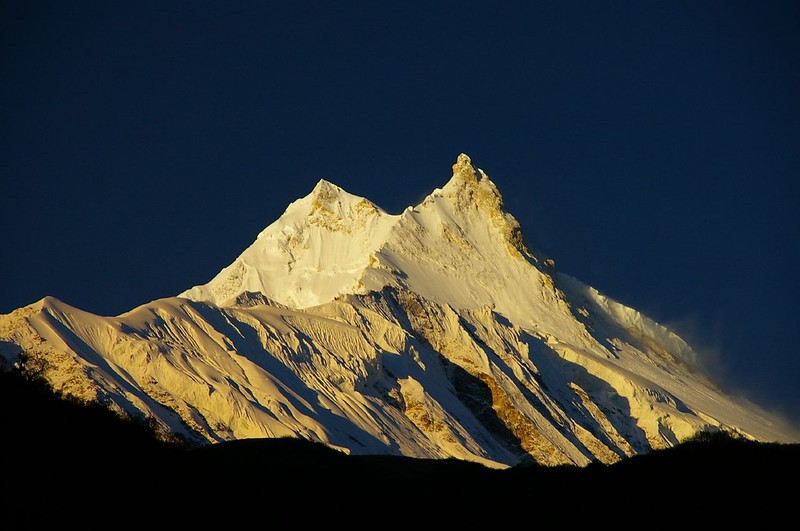
Ten peaks above 6,500 meters (21,300 feet) are visible along the way, with a few over 7,000 meters (23,000 ft). The Larkya La, at a height of 5,106 meters, is the highest peak reached along the journey route (16,752 ft). The peak has been climbed 297 times as of May 2008, with 53 deaths. The major goal of the Manaslu Conservation Area, which contains Manaslu, is to achieve conservation and sustainable management of the restricted area.
